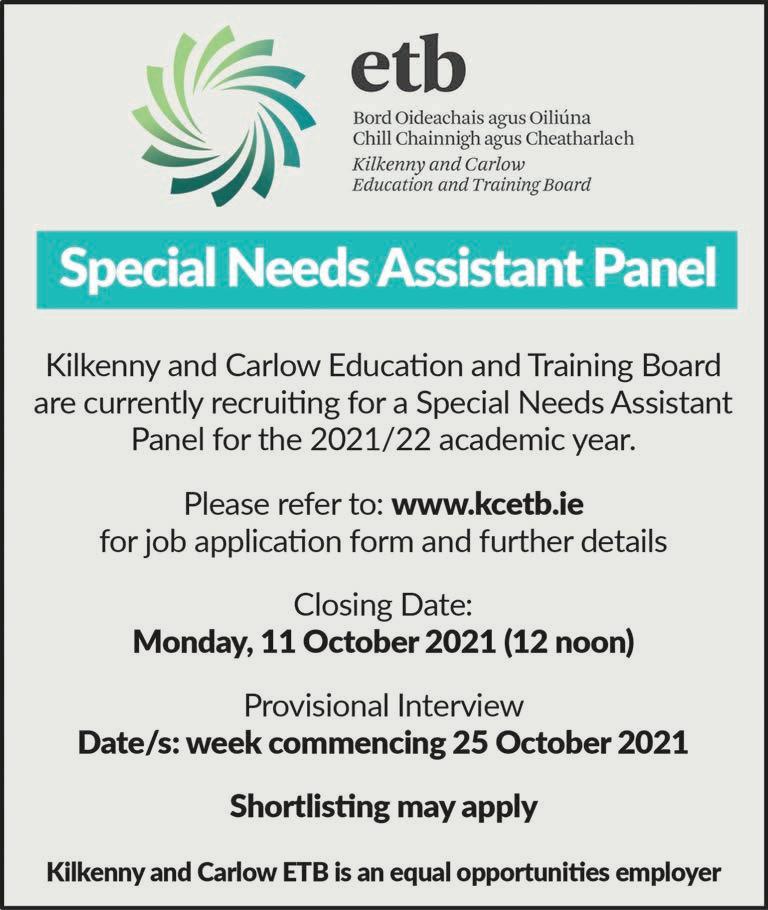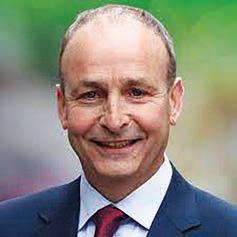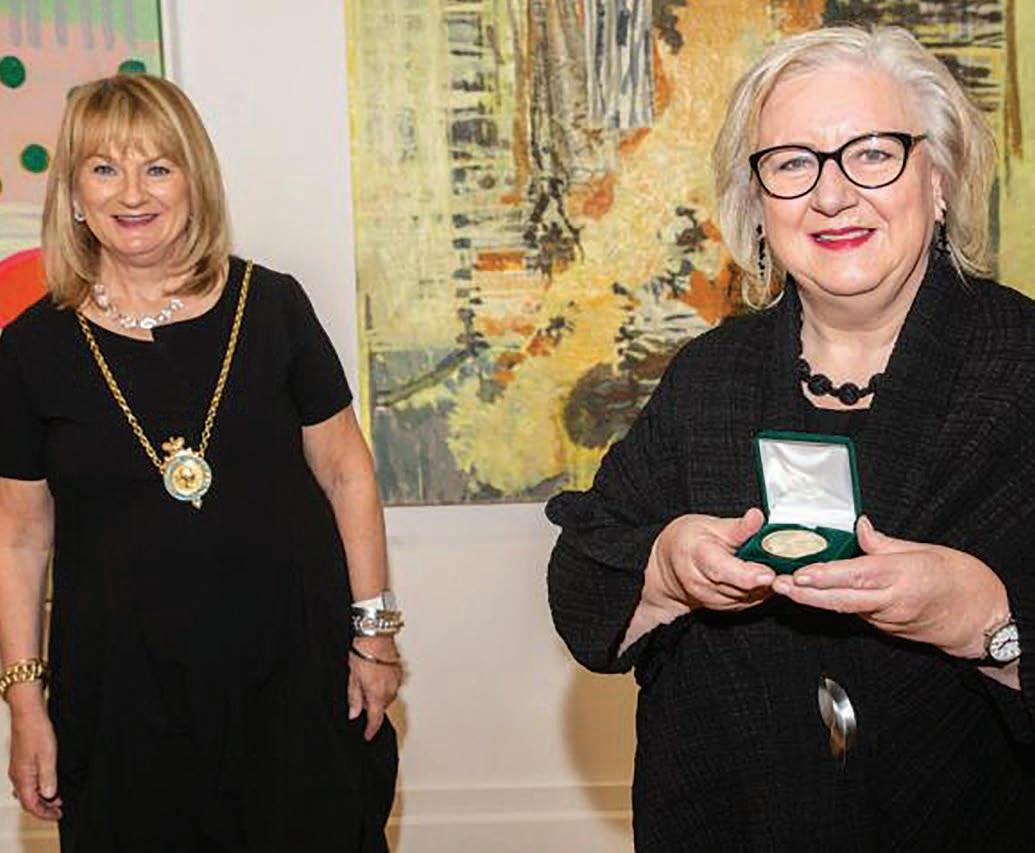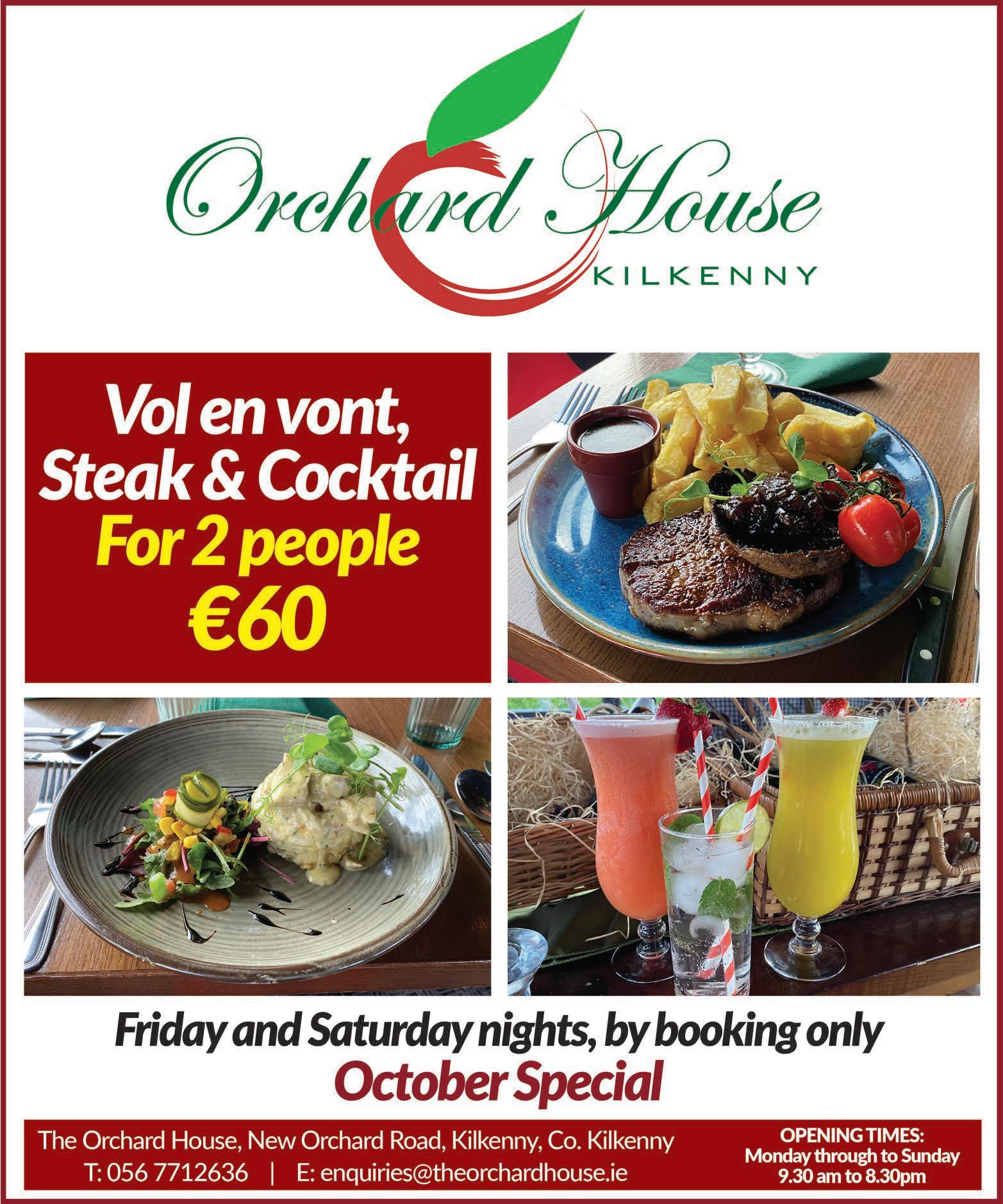
10 minute read
Paul Hopkins
The Fact OfThe Matter

Advertisement

PAUL HOPKINS PAUL HOPKINS
Student housing crisis; no key, no degree ...
THE irony is not lost on me that on the day the Irish Independent publishes its Rich Politicians List — which shows 68 millionaires in the Dail and that Michael Healy-Rae’s €4.7m property portfolio makes him the richest landlord in the Dail — comes gures that show that the number of people homeless in Ireland has risen for the third month in a row.
Latest gures show 8,212 adults and children without a home. e Department of Housing recorded 6,023 adults as being homeless during August, 2,189 children among them. Single parents and their children account for almost half the number of homeless. e homeless charity Focus Ireland says we face further increases in homelessness later this year as the private rental market constricts and evictions rise. Mike Allen, Focus Ireland Director of Advocacy, says: “All the indicators are that we will see a return to a pattern of rising homelessness in the next few months unless urgent and targeted action is taken.”
He says the Government’s new, and delayed, ‘Housing For All’ strategy needs to take a “twin track approach” that will increase social housing provision and improve prevention.
I believe that until recent times we had a misconstrued image of the homeless person as someone who was poor to begin with or who had addictions or mental health issues or had a criminal record or was long-term unemployed. Granted, such people can be homeless, often long-term. We now know, however, that among those 8,000 plus souls without a roof over their heads are people who have had to quit their rented accommodation because the landlord wants to sell or go down the airbnb route and there’s nowhere else to rent, or single people whose sole salary makes the stringent bank rules on mortgage a ordability nigh on impossible. e pandemic, too, has seen people lose jobs and mortgages become una ordable, although, thankfully, the law has changed in recent years to o er a more accommodating solution for defaulters and/or those in negative equity.
When it comes to so-called ‘a ordable housing’, a new report nds there is a 20% deterioration in just three months in the availability of a ordable rental properties across the country, and a 27% deterioration in six months. e quarterly Locked Out report from the Simon Communities of Ireland, shows there are only 2,208 properties available to rent at any price within the 16 areas examined over the three dates in June of this year, down 20% from March last.
Meanwhile, the nearly quarter of a million young people going into in third level education in recent weeks are seeing the “worst student accommodation crisis ever” with student unions saying the Government was “warned it was coming but ignored it”.
Students are sleeping in elds, in cars, packed into hostels, paying up to €400 a week to stay in a hotel, couch-sur ng, or commuting up to ve hours daily to attend lectures, says USI President Clare Austick.
According to college lecturer Rory Hearne, some students have not been able to take up their rst-preference course, others have deferred, and even dropped out. “ is is the worst student accommodation crisis we have ever seen in this country,” he says. “Despite warnings from myself and others that this crisis was coming, the Government largely ignored it.
“As a lecturer, I see in my courses the personal toll of the accommodation crisis. Students are stressed, anxious, and exhausted,” says Dr Hearne, an assistant professor in social policy at Maynooth University.
Like the wider housing crisis, the student crisis is not some ‘accident’ or force of nature. It has happened because students have been left to the vagaries of the market and questionable investor funds. And housing left to the unforeseen changes of the private market.
Here’s the crux of the matter: Back in July 2017, the Government launched its National Student Accommodation Strategy based on enticing private sector (and mainly global real estate investors) to deliver purpose-built student accommodation (PBSA). In reality, the so-called strategy had little funding for publicly provided student accommodation by way of the Higher Education institutes. Of the 8,229 PBSA units completed since 2016, 84% are privately delivered, and just one in six is student accommodation via public third-level colleges.
And, anyway, such private investor ‘digs’ are very expensive. Rooms costing up to a €1,000 a month. What student can a ord that?
And now, increasingly, they are being converted into shortterm tourist accommodation!
Are we having a laugh or what?



Easing of US travel ban ‘game changer’ for tourism
THE relaxation of the US travel ban will be a “game changer” for Irish tourism, according to the Irish Tourism and Industry Confederation (ITIC).
As travel between the US and Europe reopens, it will change the future of Irish tourism and its recovery – if it is delivered and supported appropriately.
America has been considered as a key partner in the Irish trade sector for many years.
Pre-pandemic, Aer Lingus had developed Dublin as a strategic hub between the North American bloc and the European continent.
e ITIC explains the relationship further. “Facilities at Aer Lingus and coveted US pre-clearance facilities gave Dublin, as well as Shannon, a competitive advantage over many international rivals. Effectively Europe via Ireland was the destination being sold to Americans. Likewise, Europeans had an easy and coste ective route to the USA via Dublin’s hub.
“By 2019 this had resulted in 18 di erent US gateways, operated by 5 airlines, with direct routes to Ireland. ”
Pre-Covid, it is estimated that American tourists were spending close to €2 billion in Ireland. Of course, all of this was put on pause when the travel ban hit in March 2020.
“So. as the ban was lifted last week, people of all ages let out a sigh of relief. It was time to meet family and friends again and get the tourism industry back up and running.”
However, the ITIC suggests reopening alone cannot be enough for the tourism sector to recover. A recovery stimulus package must be introduced by the Government to support the industry.
Resolve over corporate tax not there yet, says Martin
THE Taoiseach has said that negotiations on Ireland’s corporate tax rate are “not complete at all” and “far more detail” is required about the OECD proposals.
Micheál Martin (pictured) told the Dáil that Ireland had “entered reservations” about the plans to increase the tax to 15% due to “the lack of certainty.”
The Taoiseach said that the “key issue” for investors is that they do not want the corporate tax rate to “change every two to three years.”
He was replying to the Social Democrats co-leader Catherine Murphy who said Mr Martin’s “evolving language” suggested that he believed change was coming.
She asked if that comes to pass, what would Ireland’s “single most identifable” element of industrial policy be: “What will our unique selling point be then?”
Expressing concern about Ireland’s rising cost-ofliving, Ms Murphy said that Ireland’s housing costs were 78% above the EU average.
She argued that, in the absence of Ireland’s existing corporate tax rate, the high cost of living in Ireland would feature much higher in the calculations of investors considering basing themselves here.
In reply, Mr Martin said that the existing corporate tax rate was not the country’s “unique selling point”.
He pointed to Ireland’s membership of the European Union and also the quality of the education system.
The Taoiseach said that the corporate tax rate had been important but it was not the only aspect of industrial policy.




Gold Medal for Butler Gallery’s curator Anna
THE President of the Royal Hibernian Academy Abigail O’Brien PRHA is pictured after awarding Anna O’Sullivan, Director and Chief Curator, Butler Gallery, Kilkenny with the RHA Gold Medal. e medal is given annually to persons who have made a signi cant contribution to the arts in Ireland. It was awarded at Varnishing Day of the 191st RHA Annual Exhibition.
Irelands largest and longest running exhibition of visual art, the RHA Annual Exhibition, returns for its 191st year. e Butler Gallery Collection consists of artworks purchased or donated to the gallery, or on long-term loan. eir rst exhibition in their new home revisits beloved favourites, showcases new acquisitions, and introduces new long-term loans. is selection re ects the broad character of the collection itself and embraces a variety of genres from painting, drawing and printmaking, to photography and media works.
Collectively these works convey a contemporary freshness and are a window into this ever-evolving Collection.
Law on FOI is being look at
THE Cabinet has approved a plan to review the current Freedom of Information legislation. e review is expected to be completed by the middle of next year and recommendations will then be presented to Government.
Approval for the review was sought by Minister for Public Expenditure Michael McGrath.
On his way in to the meeting, Mr McGrath said he wanted to reassure the public that this review is to improve the legislation rather than “narrow or limit the scope of it”.
He said it would broaden and improve the Act to ensure it meets the needs of people. e Minister said he would look at proposed legislation prepared by opposition parties in “good faith”.
He said the legislation needs to be updated to re ect changes in the way we use, store and access data.
‘Housing For all’ plan opens doors to new homes
THE Minister for Housing, Local Government and Heritage, Darragh O’Brien, recently visited Kilkenny to o cially open a number of social housing developments. Following the recent launch of the Government’s new ‘Housing For All’ Plan, Minister O’Brien joined Cathaoirleach of Kilkenny Fidelis Doherty and Cathaoirleach of the Castlecomer Municipal District Pat Fitzpatrick at Glebeside, Castlecomer to mark the o cial opening of 33 new homes there.
New tenants Mai and Conor Lacey were delighted to meet Minister O’Brien and welcomed him to their new home.
Cllr Doherty said: “Kilkenny County Council has been led by housing demand in preparing and delivering projects in our County towns, where people want to live and where they will sustain our schools, shops, clubs and services.”
New housing developments have been provided in many rural towns and villages in recent months as well as in Kilkenny City and the delivery pipeline for housing will deliver many more homes over the next ve years.
Minister O’Brien was joined during the day by Mayor of Kilkenny Municipal District Andrew McGuinness and Minister of State for Heritage and Electoral Reform,Malcom Noonan, at the opening of 18 apartments at Pairc Nua, Castlecomer Road, Kilkenny and 40 homes at Seville Rise, Callan Road, Kilkenny. e Minister then moved on to open the new Kilkenny Western Environs Phase 1 Infrastructure Road scheme (now known as the Breagagh Valley). is new road will service an area of 140 hectares (350 acres) of land zoned for housing, schools and social infrastructure in a location within easy reach of Kilkenny City Centre.
Resulting from the investment in this project by the County Council and the Department of Housing, Local Government and Heritage, it is expected that om the next three to ve years up to 1,000 housing units will be provided, with su cient infrastructure in place in the area to support the construction of a total of approximately 3,000 housing units, leading in time to the alleviation of housing supply issues in Kilkenny City. Director of Services, Mary Mulholland, remarked on the “dedication and hard work” of the sta in the Housing Department resulting in real housing solutions for many families and individuals and looked forward to delivering more homes and supports to as many as possible over the lifetime of the ‘Housing For All’ plan.







